A mix of insect-related art, photography, and facts from around the web! Side blog Entomologize-nonbug.
Don't wanna be here? Send us removal request.
Text
Meat-Eating Caterpillars: less than 1% of all known lepidoptera (moths and butterflies) are carnivorous, and even fewer are known to hunt and kill their prey; these are just a few of the exceptions

Above: a carnivorous pug moth caterpillar, Eupithecia orichloris, ambushing a fly
Lepidopteran predators are extremely rare, but they do exist. Some of the most interesting examples include the carnivorous pug moth caterpillars of the genus Eupithecia, the ant-eating casebearer, the Hawaiian snail-eating moth, and the bone-collector caterpillars of the genus Hyposmocoma. Curiously, almost all of the species on this list are endemic to Hawaii.

Above: Eupithecia orichloris
The carnivorous pug moth, Eupithecia orichloris, is probably the most famous predatory caterpillar in the world, thanks to the striking and unusual method by which it captures its prey -- this species is an ambush predator that often disguises itself as a twig and then pops up out of nowhere, violently plucking its prey from the foliage. Eupithecia is the only lepidopteran genus that is known to contain ambush predators, which makes this behavior seem even more striking.
The ant-eating casebearer, Ippa conspersa, is another carnivorous caterpillar that feeds on ants and other insects (both as a predator and as a scavenger). This species uses silk, sand, and other fine debris to build a flat, peanut-shaped "shell" around its body, and the "shell" acts as a kind of camouflage, allowing the caterpillar to sneak into ant nests and hunt.

Above: the ant-eating casebearer and its unique "shell"
As its name implies, the ant-eating casebearer often feeds on ants, but it has also been known to eat cockroaches and other insects.

Above: an ant-eating casebearer feeding on a cockroach
Hyposmocoma molluscivora, commonly known as the Hawaiian snail-eating moth, is a casebearing caterpillar that feeds on live snails. It uses strands of silk to immobilize its prey, tethering the snail in place so that it can climb into the victim's shell and feed on the soft flesh within. The caterpillars of this genus are the only lepidopterans that are known to feed on molluscs; all of the other predatory caterpillars feed on arthropods (insects and arachnids).

Above: this photo shows a Hawaiian snail-eating moth using strands of silk to hold its prey in place
The genus Hyposmocoma also contains the predatory "bone-collector" caterpillars, which cover themselves with the body parts of other insects and arachnids, often scavenging the leftover pieces from spiderwebs. They carefully trim each piece of exoskeleton and then arrange them all together onto a portable silk mesh.
The caterpillars often live side-by-side with spiders, as they opportunistically feed on the insects that they find trapped in spiderwebs, and their macabre body ornaments likely serve as camouflage; they allow the caterpillar to avoid being detected or attacked by spiders.

Above: a bone-collector caterpillar covered in the body parts of other insects, including a large weevil head that is clearly visible near the center, several ant heads, a fly's leg, the abdomen of a bark beetle, a wing, and several pieces of antennae, among other things
Sources & More Info:
Journal of the Lepidopterists' Society: Predatory and Parasitic Lepidoptera
GeoJournal: Behavior, Biogeography, and Conservation of Eupithecia in the Hawaiian Islands
Korean Journal of Applied Entomology: The First Record of the Myrmecophilous Tineid Moths of Genus Ippa in Korea
Nature: Caterpillars Eat Snails Out of House and Home
Science: Web-Spinning Caterpillar Stalks Snails
NBC: Hawaiian Caterpillars Hunt like Spiders
National Geographic: This Camouflaged Critter Wears Severed Insect Body Parts like a Coat
Scientific American: Carnivorous "Bone Collector" Caterpillars Wear Corpses as Camouflage
Science: Hawaiian Caterpillar Patrols Spiderwebs Camouflaged in Insect Prey's Body Parts
4K notes
·
View notes
Text

Treasures from the kiln
1K notes
·
View notes
Photo

129K notes
·
View notes
Text
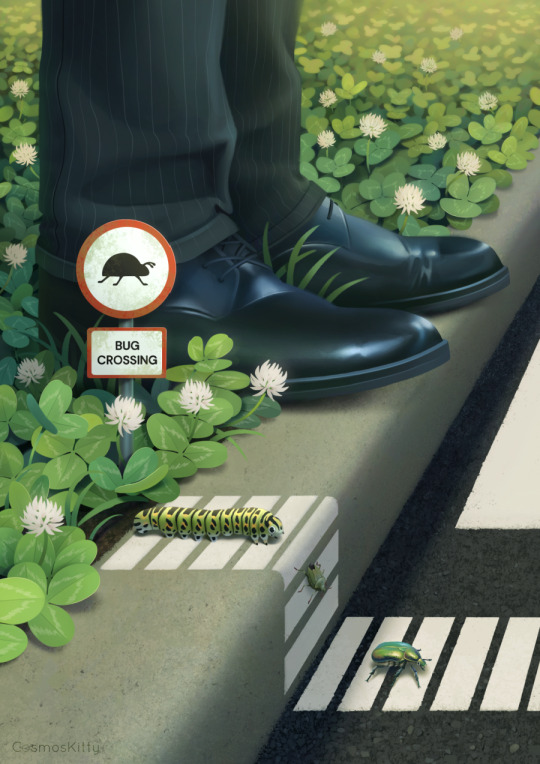
Bug Crossing 🐛
I got the idea for this piece on a sunny day a while ago after seeing a beetle in the park struggle to get across the hot tarmac path, just a silly visual to explore the question of how much we should be mindful of the wildlife we share a habitat with - they live here too!
31K notes
·
View notes
Text
Encyrtid nugget wasp on a pine needle, if you needed to know how small this lass is 🧡

2K notes
·
View notes
Text
Check out this adorable dung beetle out here doing what he does best, helping the ecosystem. His name is Yancey 🤎🖤🤎



2K notes
·
View notes
Text
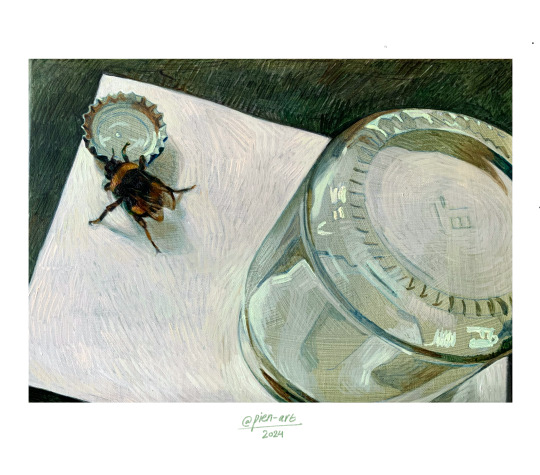


oil painting (29,7 x 42 cm) of that bumblebee from last week <3
i post more traditional art on my instagram !
12K notes
·
View notes
Photo




Jumping spider mimic planthoppers in the genus Rhotana
Photo 1 by tenebrionidfan, 2 by gancw1, 3 by budak, and 4 by deeqld
8K notes
·
View notes
Text

Utah's most special guy, the Coral Pink Sand Dunes tiger beetle, only occupies a 1800m x 300m area in the state park of the same name. This guy is NOT going places!
11K notes
·
View notes
Text

Watercolor Cicada -
Painting something with a lot more detail and intricacy, wanted to paint a cicada for a long time, glad I did one eventually.
Just updated my Etsy shop! Check it out at: etsy.com/uk/shop/WolfieeeeWatercolor
1K notes
·
View notes
Text
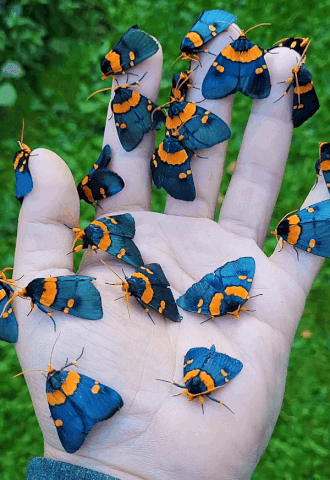
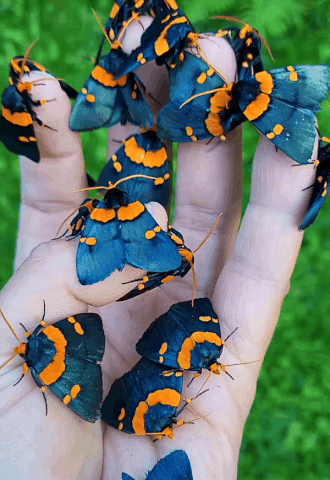
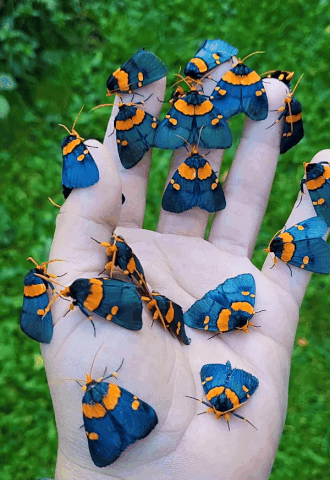
lots of african peach moths (egybolis vaillantina) | source
8K notes
·
View notes
Text

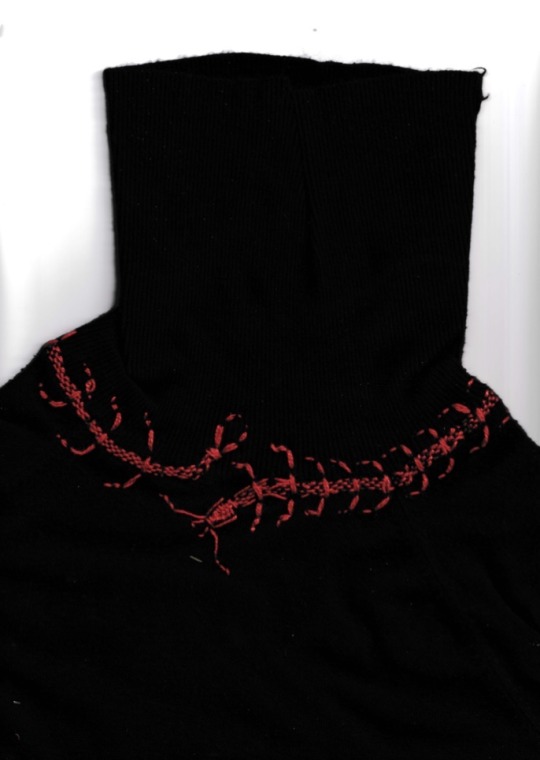

Tried visible mending for the first time !
love the effect on this old turtleneck filled with holes.
15K notes
·
View notes
Text

nature has never been binary
gynandromorph stag beetle; an organism with both female & male characteristics 🩵🩷
10K notes
·
View notes
Note
consider this: bees with flower crowns. are the bees huge or are the flowers tiny? we may never know but at least they're cute.






( EDIT : turns out this ask was based on this text post ! )
62K notes
·
View notes
Text

cross my eyes by kris knight, 2023, oil on canvas, 14 × 11 inches
938 notes
·
View notes
Text

back to regularly scheduled critters
13K notes
·
View notes
Text




Light trap lamp! The moths are paper, and the mantis is a plastic toy. The idea was suggested to me by a friend because I had this plain shade and nothing to use it for. More moths will be added in the future to fill the sides
9K notes
·
View notes